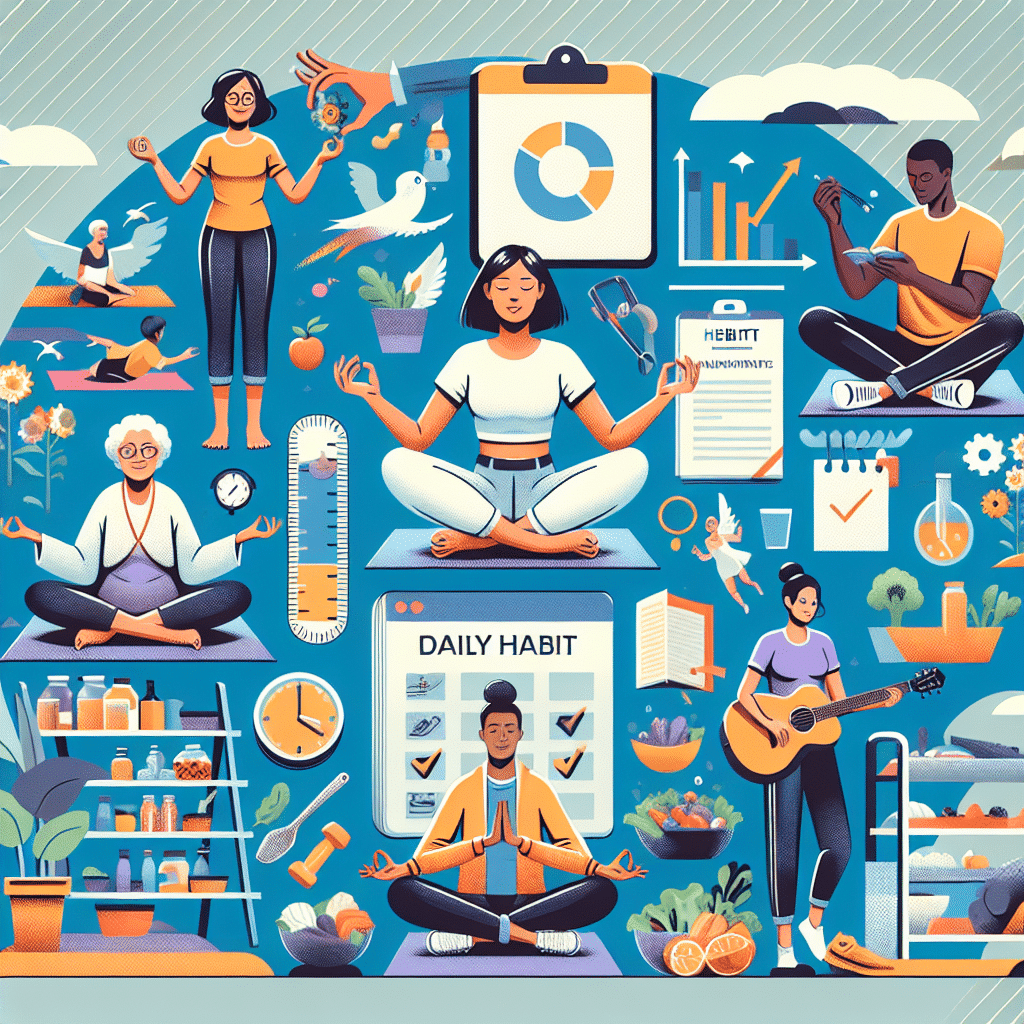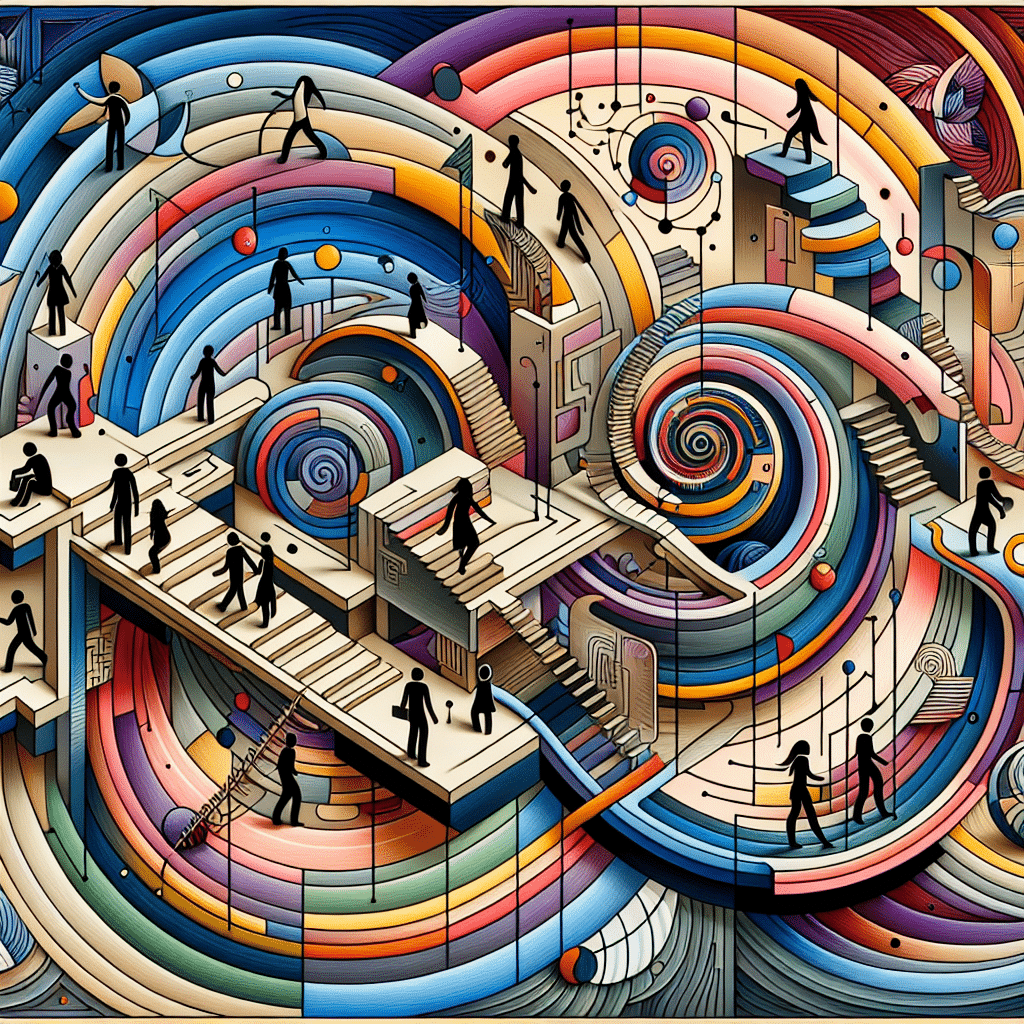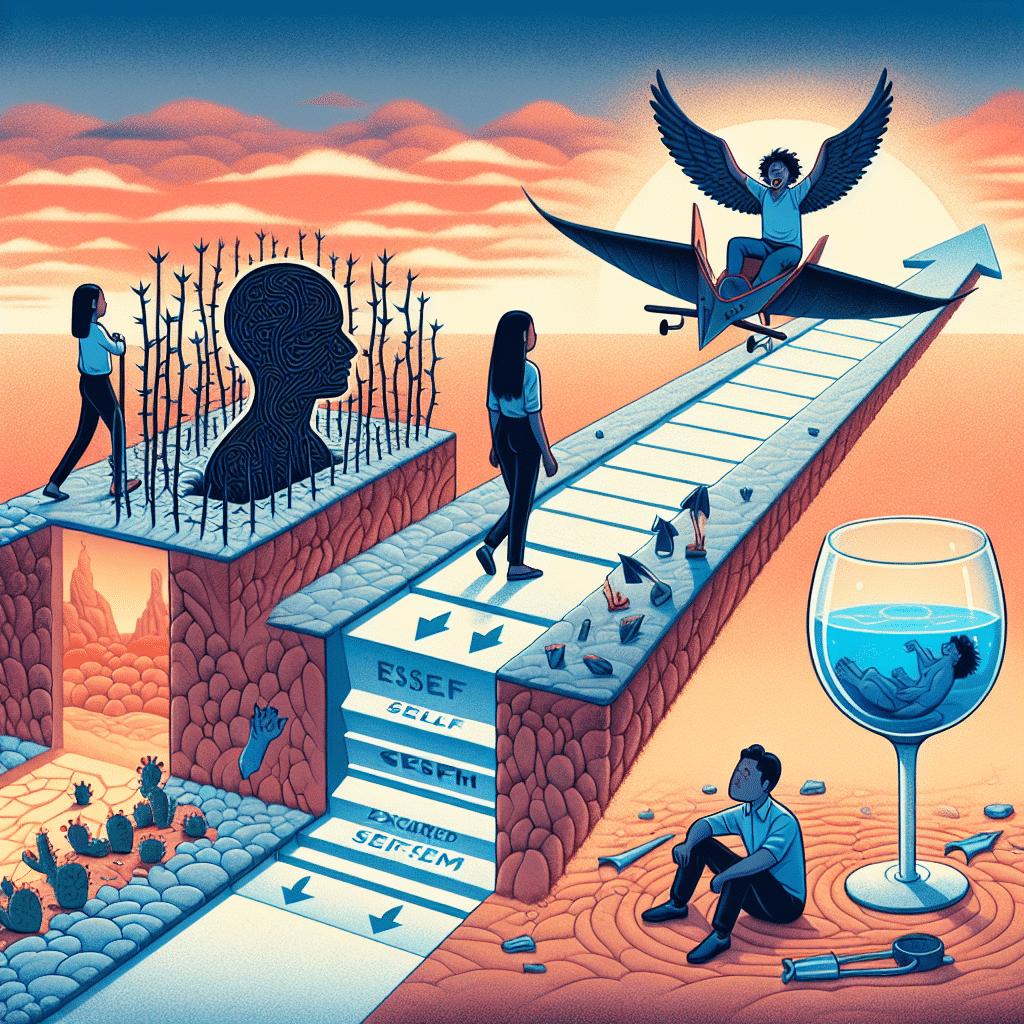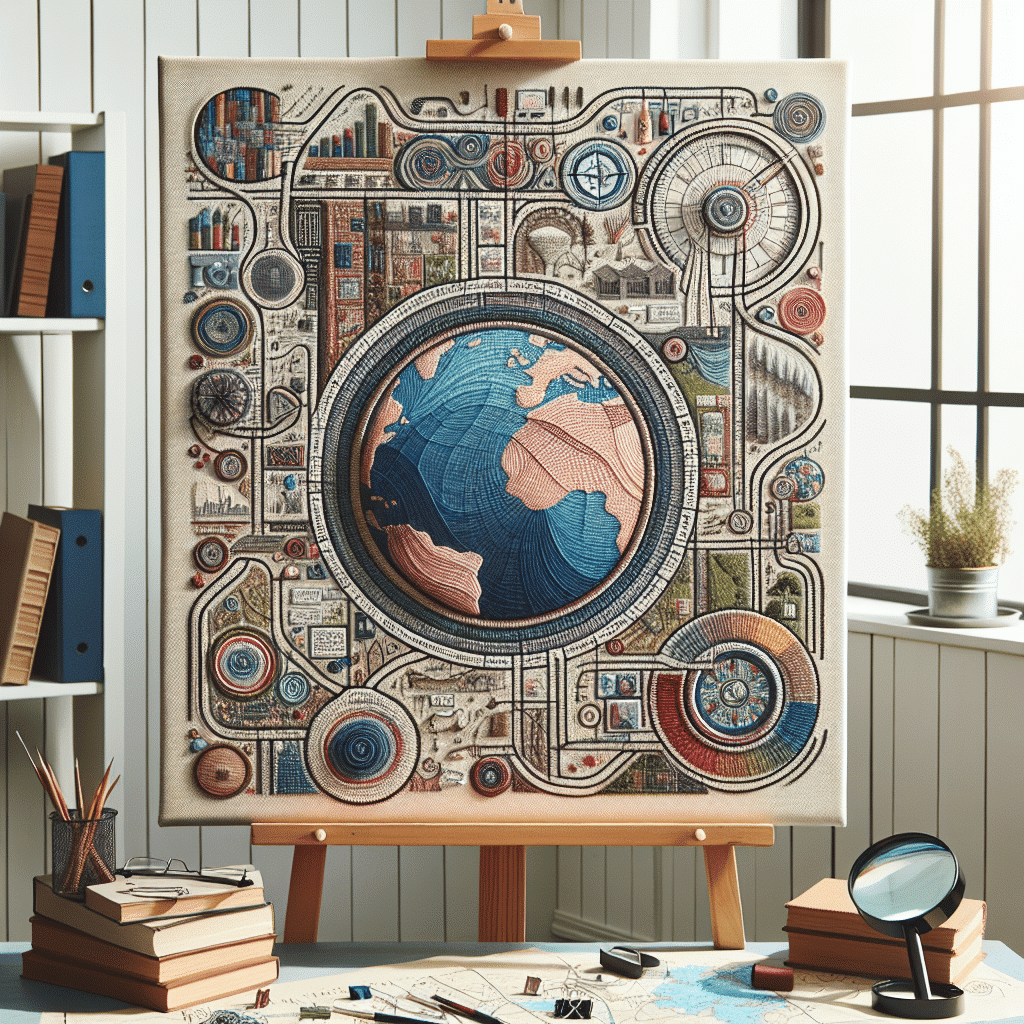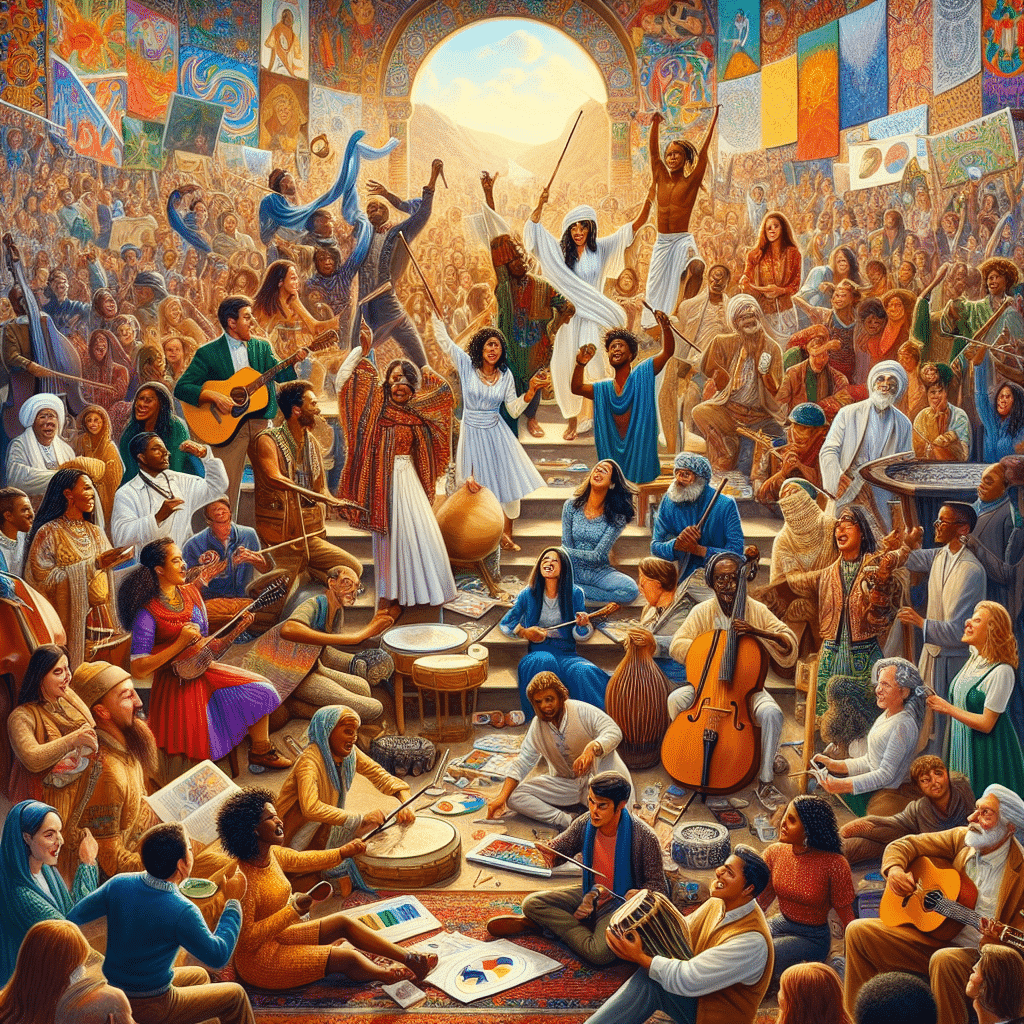
Creativity has played a significant role in shaping cultures throughout history. From art and music to literature and technology, creative expression has had a profound impact on society. This article will explore the history of creativity in culture and how it has influenced various aspects of society.
Creativity has been an integral part of human culture for centuries. From ancient civilizations to modern society, creativity has been a driving force behind innovation, progress, and cultural development. The history of creativity in culture is rich and diverse, encompassing a wide range of artistic, scientific, and technological achievements.
One of the key impacts of creativity on society is its ability to inspire and connect people. Creative expression can evoke emotions, challenge perspectives, and provoke thought, leading to social change and cultural evolution. Creative works such as music, literature, and art have the power to transcend language barriers and unite people from different backgrounds.
Creativity also plays a vital role in preserving and promoting cultural heritage. Through art, music, dance, and storytelling, cultural traditions are passed down from generation to generation, ensuring that they continue to thrive. Creative expression allows individuals to explore their identities, celebrate their heritage, and connect with others who share similar cultural experiences.
Examples of creative cultural influences can be seen in various aspects of society, from fashion and design to film and television. Creative industries such as fashion design, graphic design, and architecture contribute to the economy and drive cultural innovation. Artists, musicians, writers, and filmmakers use their creativity to communicate ideas, challenge norms, and inspire change.
Despite its many benefits, creativity in cultural context also faces challenges. Economic constraints, social pressures, and political censorship can limit creative expression and hinder cultural development. In some cases, cultural appropriation and exploitation can also undermine the integrity of creative works and harm marginalized communities.
Looking ahead, the future of creativity in shaping culture is promising. With advancements in technology, globalization, and social movements, there are new opportunities for creative expression and cultural exchange. By embracing diversity, fostering collaboration, and supporting creative industries, society can continue to harness the power of creativity for positive social change and cultural evolution.
Impact of Creativity on Society
Creativity has a profound impact on society, shaping the way people think, feel, and interact with one another. In art, music, literature, and other creative expressions, individuals and communities find new ways to express themselves, challenge conventions, and provoke thought. The influence of creativity can be seen in various aspects of society, including:
- Economic Growth: Creativity drives innovation, leading to the development of new products, services, and industries. This, in turn, boosts economic growth and creates job opportunities.
- Social Change: Creative movements have the power to break down barriers, challenge stereotypes, and promote diversity and inclusion. For example, the Civil Rights Movement in the United States used creative tactics such as music, art, and literature to advocate for social justice and equality.
- Mental Health: Engaging in creative activities has been found to have a positive impact on mental health, reducing stress, depression, and anxiety. Art therapy, for example, is a form of creative expression that helps individuals process trauma and emotions.
- Education: Creativity is an essential component of education, helping students develop critical thinking skills, problem-solving abilities, and emotional intelligence. Art and music programs in schools have been shown to improve academic performance and student engagement.
- Identity: Creative expression plays a key role in shaping individual and collective identities. By sharing their stories, experiences, and perspectives through art, people can connect with others, build empathy, and foster a sense of belonging.
Overall, creativity is a driving force behind social progress, cultural enrichment, and personal fulfillment. It empowers individuals to imagine a better world, explore new possibilities, and inspire others to do the same.
Examples of Creative Cultural Influences
Throughout history, creativity has played a significant role in shaping culture and influencing society. Various creative works have left a lasting impact on different aspects of human life, from art and literature to music and technology. Here are some examples of creative cultural influences that have left a mark on society:
1. The Renaissance Art Movement
The Renaissance period in Europe was a time of great cultural and artistic flourishing. Artists like Leonardo da Vinci, Michelangelo, and Raphael created masterpiece works of art that still continue to inspire and influence artists today. The creativity of these artists not only transformed the art world but also had a profound impact on the cultural and intellectual development of society during that time.
2. The Impact of Shakespearean Literature
William Shakespeare, often regarded as one of the greatest playwrights in history, wrote plays that have had a lasting impact on literature and popular culture. His works, such as “Hamlet,” “Romeo and Juliet,” and “Macbeth,” have been adapted into various forms of media and continue to be studied and performed worldwide. The creative genius of Shakespeare has played a significant role in shaping the English language and the way we understand human emotions and relationships.
3. The Influence of Hip-Hop Music
Hip-hop music, originating from the Bronx in New York City in the 1970s, has evolved into a global cultural phenomenon. Artists like Grandmaster Flash, Run-D.M.C., and Tupac Shakur have used their creativity to address social and political issues, while also influencing fashion, language, and dance styles. Hip-hop has not only shaped music culture but has also impacted mainstream media and popular culture worldwide.
4. The Rise of Social Media Influencers
In the digital age, social media platforms have provided a new space for creativity to thrive. Influencers, who create and share content on platforms like Instagram, YouTube, and TikTok, have become powerful cultural icons with millions of followers. Their creativity in producing engaging and relatable content has redefined marketing, entertainment, and communication strategies, influencing trends and shaping consumer behavior.
These examples highlight the powerful impact of creativity on culture and society, showcasing how creative works can shape our beliefs, values, and perceptions of the world around us.
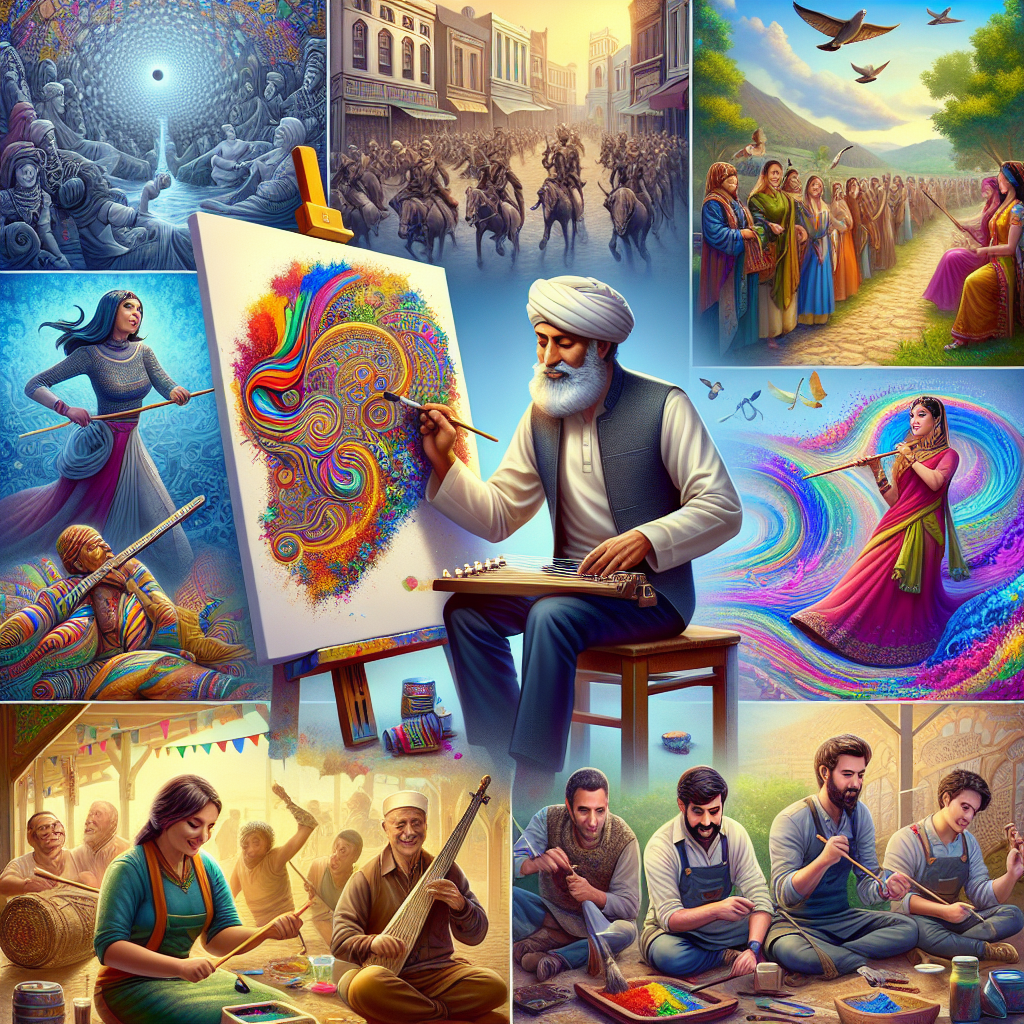
Challenges of Creativity in Cultural Context
In today’s diverse and rapidly changing world, creativity faces several challenges when it comes to its impact on culture. One major challenge is the preservation of traditional cultural values and practices in the face of globalization and modernization. As societies become more interconnected, there is a risk of losing unique cultural identities and traditions that have been passed down through generations.
Another challenge is the commodification of creativity, where art and cultural expressions are often commercialized for profit rather than being valued for their intrinsic worth. This can lead to the dilution of authentic cultural experiences and the perpetuation of stereotypes and misrepresentations.
Social and political influences also play a significant role in shaping the cultural impact of creativity. Censorship, political agendas, and social norms can restrict the freedom of expression for artists and creators, limiting their ability to challenge the status quo and provoke thought and reflection.
Additionally, the digital age has brought about new challenges for creativity in culture, with the rise of social media and online platforms influencing the way art and culture are consumed and shared. While digital technology has provided new opportunities for creativity to reach wider audiences, it has also raised questions about authenticity, privacy, and the democratization of creativity.
Furthermore, the lack of diversity and representation in creative industries can hinder the full potential of creativity in shaping culture. When certain voices and perspectives are marginalized or excluded, the richness and complexity of cultural expression are diminished, limiting the transformative power of creativity.
Overall, navigating these challenges requires a thoughtful and reflective approach to creativity in cultural context. By promoting inclusivity, diversity, and authenticity, creativity can continue to have a profound and positive impact on society, fostering understanding, empathy, and connection across diverse cultural landscapes.
Future of Creativity in Shaping Culture
Creativity has always played a significant role in shaping culture, and as we move forward into the future, its impact is only expected to grow. With advancements in technology and globalization, the possibilities for creative expression are expanding, leading to new cultural influences and trends.
Embracing Diversity
One of the key factors that will shape the future of creativity in culture is the increasing diversity of voices and perspectives. As different cultures interact and influence each other, creative expressions will become more varied and inclusive. This will lead to a richer cultural tapestry that reflects the complexity of our global society.
Technology as a Creative Tool
The rapid advancement of technology is also revolutionizing the way creativity is expressed and consumed. From virtual reality to artificial intelligence, new tools are enabling artists and creators to push the boundaries of traditional art forms. This fusion of technology and creativity is giving rise to new art movements and cultural experiences.
Social Impact of Creativity
In a world facing challenges such as climate change, social inequality, and political unrest, creativity has the potential to drive positive change. Artists, musicians, writers, and other creatives are using their platforms to raise awareness, provoke thought, and inspire action. The future of creativity in shaping culture will involve a greater emphasis on social impact and meaningful storytelling.
Educational Shifts
As the importance of creativity in culture becomes more evident, there will be a greater emphasis on creativity in education. Schools and universities will need to adapt their curricula to nurture the creative potential of students and prepare them for a future where innovation and originality are highly valued. This shift in education will play a crucial role in shaping the cultural landscape of tomorrow.
In conclusion, the future of creativity in shaping culture holds immense potential for transformative change. By embracing diversity, leveraging technology, driving social impact, and reimagining education, creativity will continue to be a driving force in shaping the cultural identities of societies around the world.
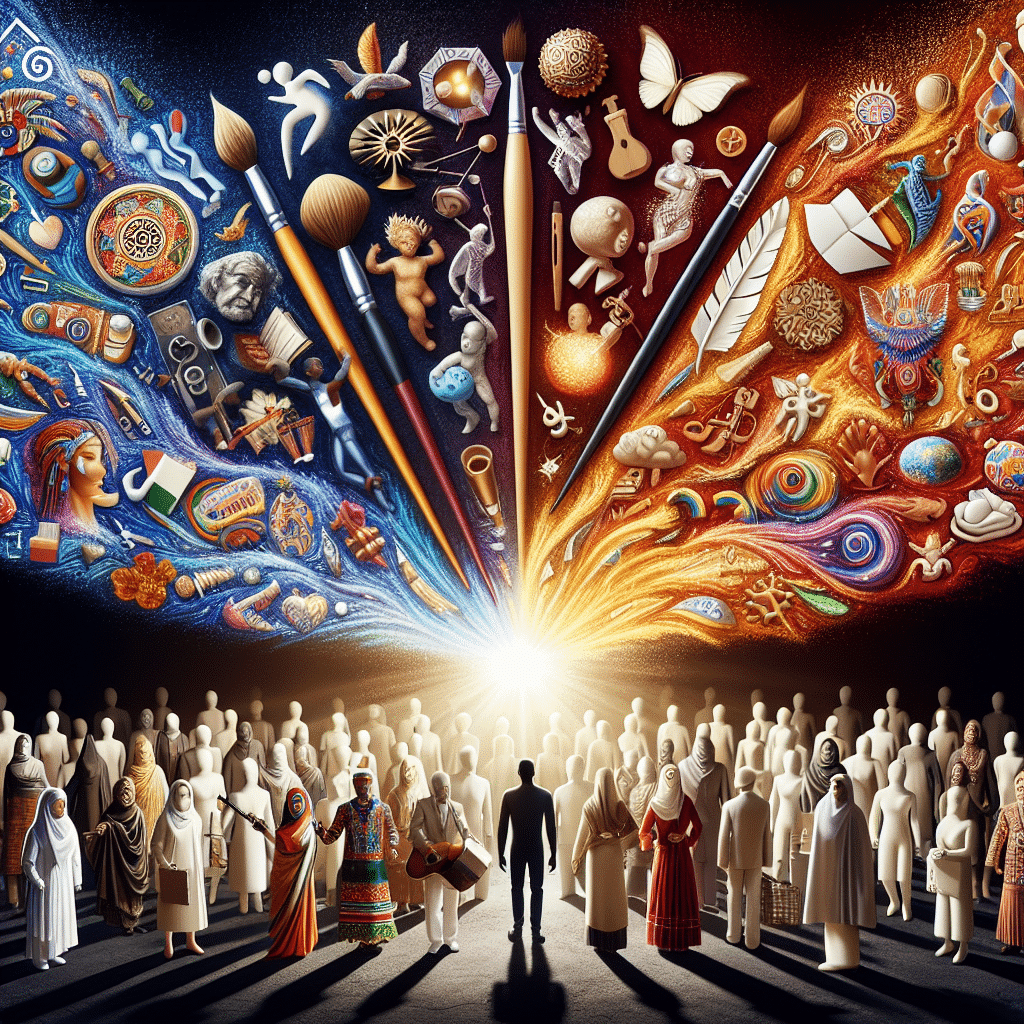 ## Summary
## Summary
Creativity has played a significant role in shaping culture throughout history, influencing societal norms, beliefs, and practices. From art and literature to technology and fashion, creative individuals have made lasting impacts on society. Examples of cultural creativity can be seen in the works of renowned artists, musicians, writers, and designers whose innovations have transcended time and space. However, challenges such as censorship and commercialization pose threats to the authenticity of creative expression in cultural contexts. Looking ahead, the future of creativity in shaping culture remains promising as new generations continue to push boundaries and redefine artistic boundaries.


